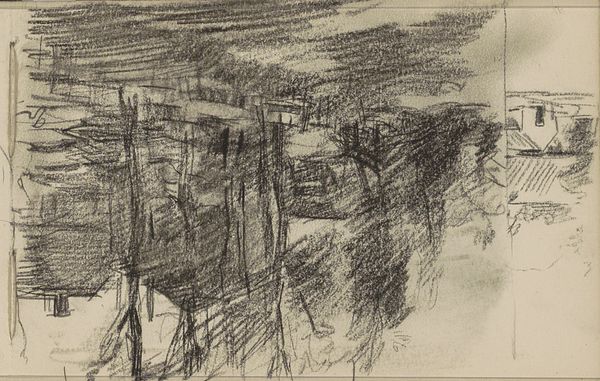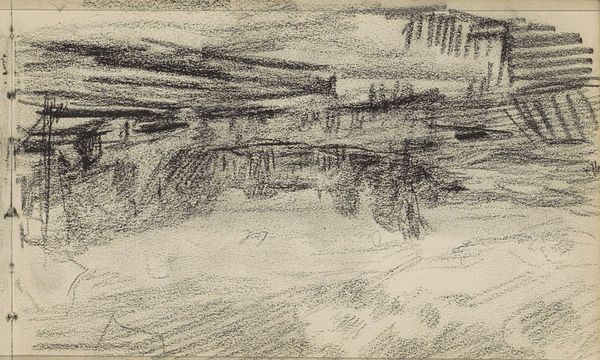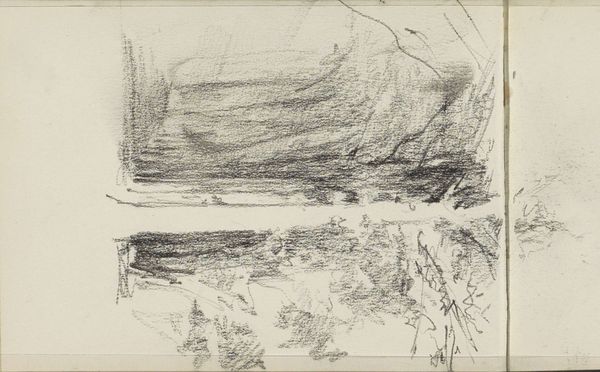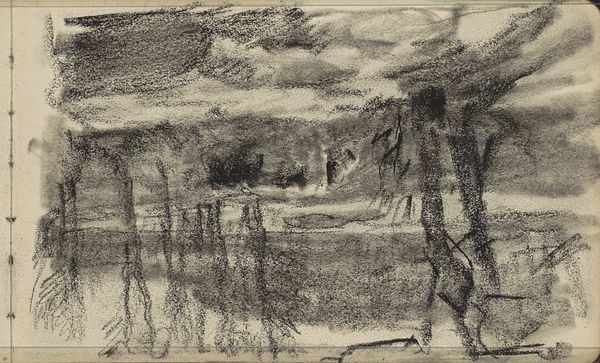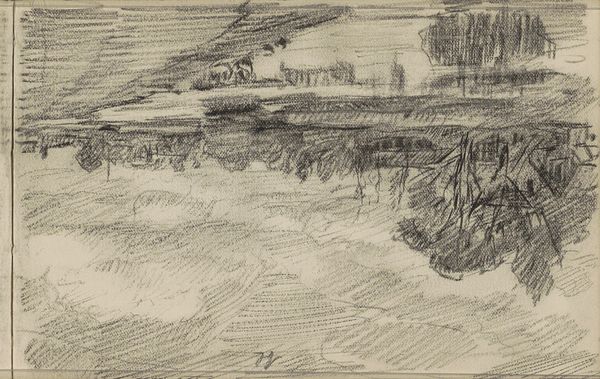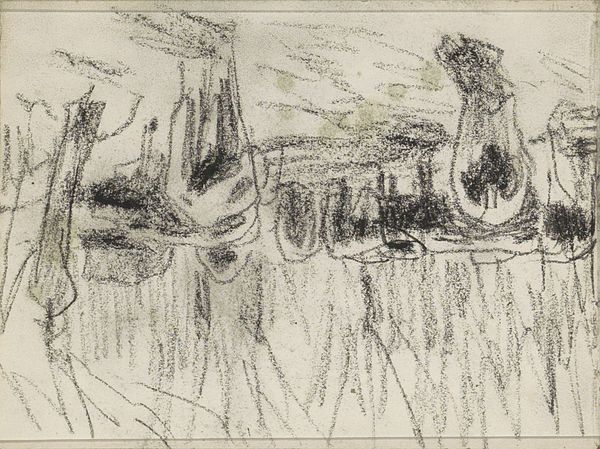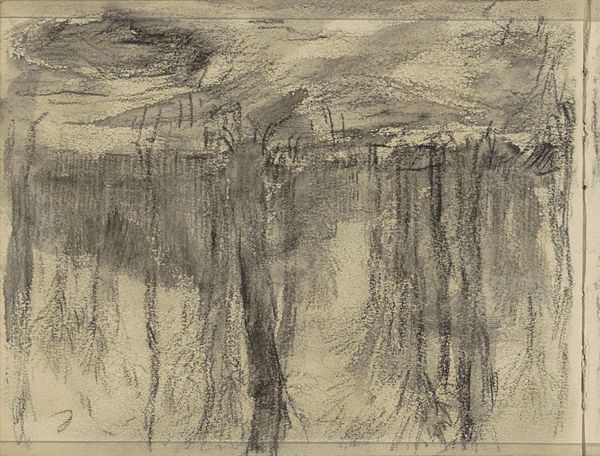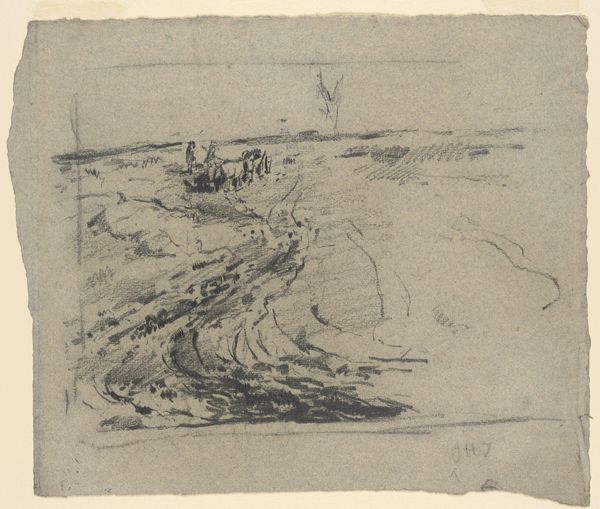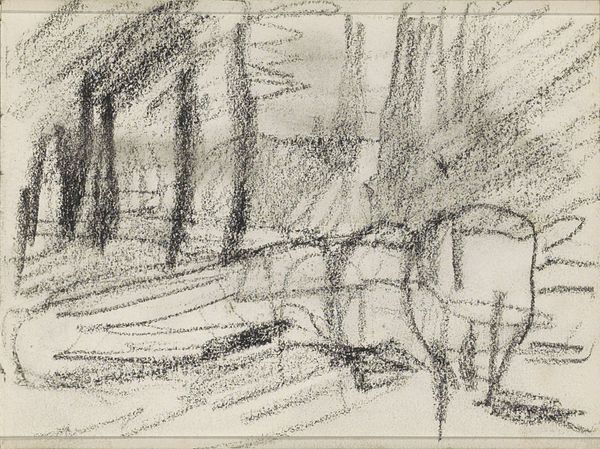
drawing, paper, pencil, graphite
#
drawing
#
pencil sketch
#
landscape
#
paper
#
pencil
#
line
#
graphite
#
realism
Copyright: Rijks Museum: Open Domain
Curator: This drawing is titled "Rivierlandschap met zeilschepen," or "River Landscape with Sailing Ships," by Johan Antonie de Jonge, created sometime between 1901 and 1927 using pencil and graphite on paper. Editor: The composition is striking—moody, even. The sketch-like quality really emphasizes the raw, almost industrial landscape; like a quickly captured moment in time. Curator: Consider that these landscapes often intersected with burgeoning industrialization and shifting social landscapes. The river becomes a site of labor, transportation, and evolving power dynamics. How do you see these implications play out in the image? Editor: The choice of graphite on paper is critical. These accessible materials speak to the democratic nature of sketching. One can imagine the artist capturing the scene, recording how it operated on an everyday basis. The medium itself embodies a record of transient work, and perhaps highlights that in a quiet way. Curator: I see the ships not merely as vessels but as symbols of trade routes that intersect with colonial legacies, impacting social mobility, the global distribution of resources, and how particular groups either profit or are excluded from global networks of economic power. How is it shaped or reshaped across time by these material flows? Editor: Absolutely. I mean, graphite, too, travels. It’s mined, manufactured into pencils… the finished product feels deceptively simple. There's labor woven into those delicate marks on the page. The lines speak of journeys – of pencils across paper, of ships across water – binding labor and transport into one network of actions and processes. Curator: The way we read "landscape," a deceptively neutral term, becomes charged with implications. Landscapes are rarely neutral and the very act of depicting can subtly shape political discourses or challenge these underlying issues. Editor: Ultimately, seeing it as a set of processes makes us question art-making itself. It brings it down to a fundamental element that reminds us of its ability to show processes, rather than some end creation that isn’t attached to labor. Curator: Absolutely. De Jonge invites us to view and consider what landscape meant within historical forces and social and power inequities in those moments. Editor: Right, seeing the layers, of landscape, of labour... gives a renewed value to the process, that has otherwise been missed.
Comments
No comments
Be the first to comment and join the conversation on the ultimate creative platform.
